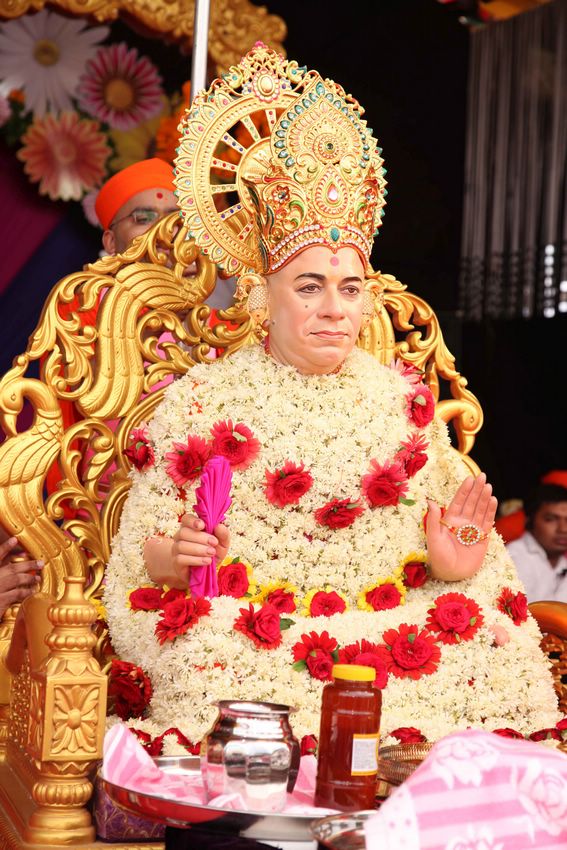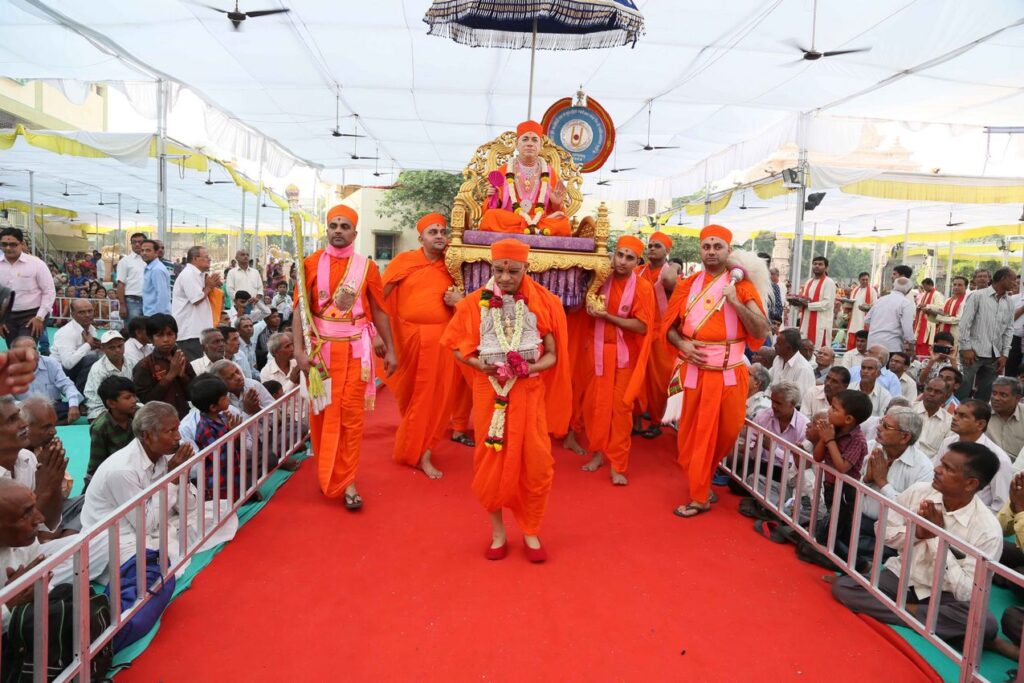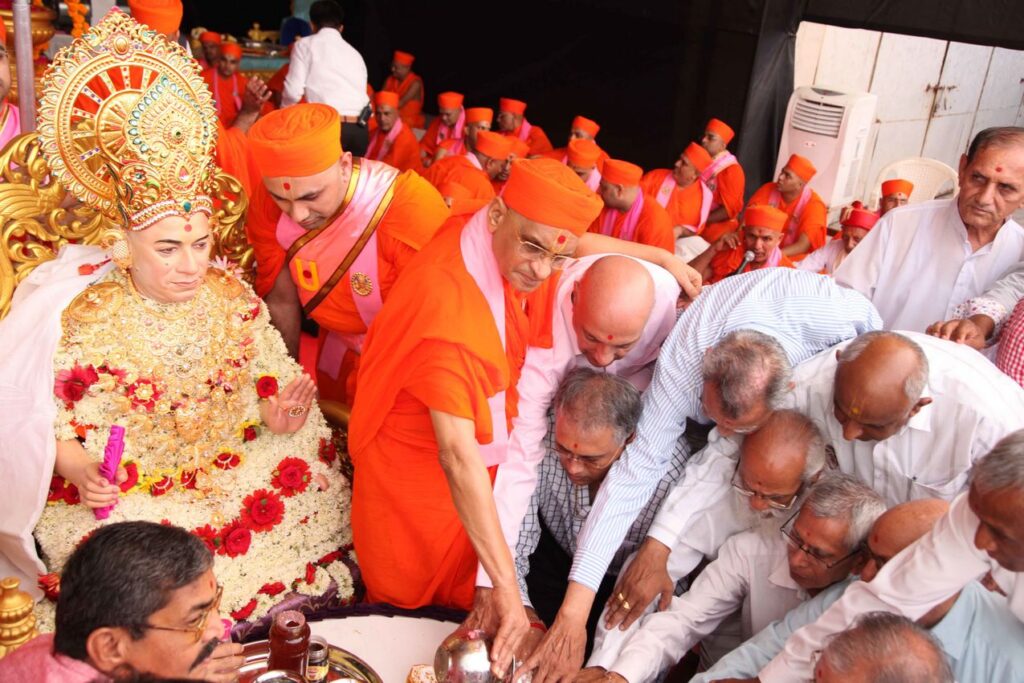Jeevanpran Shree Muktajeevan Swamibapa, was the founder of Maninagar Shree Swaminarayan Gadi Sansthan and fourth in the divine lineage of supreme Lord Shree Swaminarayan’s ascetic spiritual successors, which commences from Sadguru Shree Gopalanand Swami.
Jeevanpran Shree Muktajeevan Swamibapa, was the founder of Maninagar Shree Swaminarayan Gadi Sansthan and fourth in the divine lineage of supreme Lord Shree Swaminarayan’s ascetic spiritual successors, which commences from Sadguru Shree Gopalanand Swami.
He was a remarkable, divine personality who revolutionised the entire Swaminarayan Faith, and his pioneering teachings of performing humanitarian and charitable work in addition to religious duties have now been followed by all.
Jeevanpran Swamibapa preserved, protected and propagated the unadulterated philosophy of Lord Swaminarayan, which was perfectly explained by Jeevanpran Shree Abji Bapashree. Jeevanpran Swamibapa revealed the true identity of Jeevanpran Bapashree and ensured that his name and teachings are never annihilated.
Most importantly, by the express command of Lord Shree Swaminarayan Himself, Jeevanpran Swamibapa gave a physical embodiment to the Lord’s divine lustrous throne that exists in Akshardham, Shree Swaminarayan Gadi.
Fulfilling the promises of Jeevanpran Shree Abji Bapashree and many of the eminent Sadguru Sants, the divine personality, who represented the supreme Lord Swaminarayan Himself, manifested upon the Earth in Samvat 1963 Bhadarva Vad Amas (Monday 7th October 1907). Shree Muktajeevan Swamibapa manifested at the home of Muljibhai and Ichhaba in the village of Kheda. His name prior to initiation as a sant was Purushottambhai.


To celebrate Jeevanpran Shree Muktajeevan Swamibapa’s auspicious manifestation day, sants and disciples hold a procession, during which Swamibapa’s Murti is ceremonially carried on a palanquin to the stage, where grand adoration ceremony is performed.
The Shodashopachaar Ceremony is a 16-fold Vedic adoration ceremony comprising of offering aavahan – invitation, aasan – seat, padya – ceremonial bathing of feet with items used in devotional practices such as sandalwood paste, flowers and water, arghya – placing items used in devotional practices such as rice, flowers etc. into his hands, aachaman – self purification ritual involving the sipping of consecrated water, snan – bathing, vastra – offering of clothing, oopvit – offering of the sacred thread, chandan – offering of sandalwood paste, pushpa – offering of flowers, dhoop – offering of incense, deep – offering of lamps, naivedya – offering of food items, tambul (mukhvas) – offering of beetle nut and spices chewed after a meal to freshen the mouth, dakshina – offering a gift of money, pushpanjali – offering a handful of flowers at their feet, to represent bowing down to the Lord with devotion and humility. One by one, devotees come forward and offer these items of adoration at Jeevanpran Swamibapa’s divine lotus.

Finally, aarti is performed by Acharya Swamishree and sants, and then disciples are given the opportunity to perform the sacred aarti ceremony.
This joyous occasion is one of the most sacred days in the calendar for Shree Swaminarayan Gadi disciples.